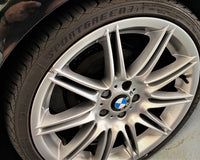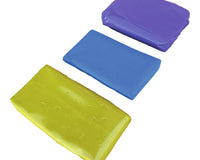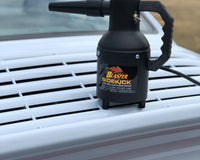When it comes to maintaining the aesthetic appeal of your vehicle, terms like “waxing” and “polishing” are often used interchangeably. Many car owners, especially those new to detailing, mistakenly believe they serve the same purpose. However, these two processes are fundamentally different in terms of their purpose, method, and results. While both contribute to your car’s overall finish, understanding their differences will help you take better care of your vehicle’s paintwork, ensure its longevity, and avoid unnecessary damage.
This guide is crafted to help you distinguish between waxing and polishing. We’ll explore what each process entails, the science behind them, their benefits, tools involved, when and how to perform them, and how they fit into a complete detailing routine. Whether you're a weekend warrior or looking to elevate your car care game, knowing when to wax and when to polish can make all the difference in achieving that perfect showroom shine.
What is Car Polishing?
The Purpose of Polishing
Polishing is a paint correction process. Its primary goal is to remove imperfections from your car’s paint surface, such as swirl marks, oxidation, water spots, light scratches, and dullness. This is achieved by using an abrasive compound, either liquid or paste, that helps smooth out the paint surface at a microscopic level.
Unlike waxing, which adds a protective layer, polishing is about refining and restoring. Think of it as exfoliating the skin — it doesn’t protect, but it clears away the surface flaws to reveal a cleaner, clearer look underneath.
How It Works
Polishing compounds contain micro-abrasives that cut into the clear coat of your vehicle's paint. When applied using a polishing pad or machine, these abrasives level out the surface by removing a tiny amount of the clear coat, thus eliminating visible imperfections. The result is a smooth, highly reflective surface that enhances depth and colour clarity.
It’s important to note that polishing is not meant to be a frequent activity. Since it removes a bit of the paint each time, excessive polishing can wear down the clear coat over time.
Types of Car Polish
-
Cutting Polish – Has high abrasive content, used for correcting heavy swirl marks and oxidation.
-
Finishing Polish – Low abrasiveness, used after cutting polish to refine the surface for gloss.
-
All-in-One (AIO) Polish – Combines light abrasives with a sealant or wax; best for maintenance detailing.
Polish is available in different forms, including creams, liquids, and pastes, and can be applied by hand or dual-action (DA) polishers depending on the desired results.
What is Car Waxing?
The Purpose of Waxing
Waxing, unlike polishing, is a protective step in car care. Its goal is not to correct but to preserve. Car wax creates a sacrificial layer on top of your car's clear coat, protecting it from environmental contaminants such as UV rays, road salt, acid rain, bird droppings, sap, and everyday grime.
This protective barrier not only shields the paintwork but also enhances the visual appeal by adding gloss and depth. A well-waxed car not only looks better but stays cleaner longer, as wax makes the surface more hydrophobic, helping repel water and dirt.
How It Works
Car wax — whether natural or synthetic — bonds with the surface of the paint and forms a thin, invisible layer that fills in microscopic imperfections. This smoothens the finish and reduces the chances of dirt or debris adhering to the surface. It also helps in making water bead off easily, reducing the likelihood of water spots forming.
Waxing does not cut into the paint or clear coat; it only sits on top, meaning it can be reapplied as often as needed without damaging the vehicle’s finish.
Types of Car Wax
-
Natural Wax (Carnauba) – Known for deep shine and warmth, but wears off faster (typically 4–8 weeks).
-
Synthetic Wax (Sealants) – Longer-lasting (up to 6 months), easier to apply, and offers strong protection.
-
Spray Wax – Quick application, best for topping up between full waxing sessions.
-
Paste Wax – More durable but can be labour-intensive to apply and remove.
Each type of wax has its use-case, depending on your lifestyle, detailing schedule, and desired finish.

Key Differences Between Waxing and Polishing
| Feature | Polishing | Waxing |
|---|---|---|
| Primary Purpose | Paint correction | Paint protection |
| Method | Uses abrasives to remove imperfections | Applies a protective layer over the paint |
| Effect on Paint | Removes a small layer of clear coat | Does not affect paint thickness |
| Frequency | Occasionally (2–3 times a year max) | Frequently (every 4–12 weeks) |
| Tools Used | Dual action polisher, cutting pads, polishing compound | Applicator pads, microfiber cloths, wax |
| Result | Removes scratches, swirl marks, dullness | Adds shine, gloss, UV and environmental protection |
When Should You Polish Your Car?
Signs It’s Time to Polish
Polishing should be considered when the paint shows visible flaws that regular washing and waxing cannot address. If your vehicle has:
-
Visible swirl marks or holograms in direct sunlight
-
Light scratches or scuffs
-
Faded or oxidised paint
-
Stubborn water spots or sap marks
-
A dull, lifeless finish
Then a polish will restore clarity and gloss before applying protection.
How Often Should You Polish?
Given that polishing removes a fine layer of the clear coat, it should only be done when necessary — typically once or twice a year for well-maintained vehicles. Cars that are exposed to harsh conditions or those that haven’t been maintained might require more frequent polishing early on, followed by a consistent waxing routine to preserve results.
Over-polishing can thin the clear coat and potentially cause premature paint failure, especially on older vehicles with single-stage paint.
When Should You Wax Your Car?
Benefits of Regular Waxing
Waxing should be a part of your regular detailing routine. It does not correct paint issues, but it prevents them. Some of the top benefits include:
-
UV Protection: Shields paint from harmful sun rays that cause fading.
-
Water Repellency: Creates a hydrophobic surface that resists water and contaminants.
-
Shine and Depth: Enhances the visual appearance and makes colours pop.
-
Ease of Cleaning: Reduces dirt adhesion, making routine washes more effective.
-
Paint Longevity: Extends the life of your vehicle’s paintwork by preventing oxidation and corrosion.
How Often Should You Wax?
The frequency depends on the product used and the environment your car is exposed to. As a rule of thumb:
-
Carnauba Wax: Every 4–6 weeks
-
Synthetic Wax: Every 3–6 months
-
Spray Wax: Weekly or after every wash
For best results, always re-wax after polishing, and consider layering wax for enhanced durability and shine.
Where Do Sealants and Ceramic Coatings Fit?
Paint Sealants
Sealants are synthetic alternatives to natural waxes. They offer better longevity (up to 6–9 months), high gloss, and a slick feel. They’re also more resistant to chemicals and heat, making them a great choice for daily-driven vehicles or those in harsher climates.
They apply like a wax but are made with synthetic polymers that chemically bond to the paint surface, offering longer-lasting protection.
Ceramic Coatings
Ceramic coatings are professional-grade protectants that offer years of protection. They bond chemically with the clear coat and provide extreme hydrophobicity, UV protection, and scratch resistance. Unlike wax or sealants, ceramic coatings require paint correction (polishing) before application to ensure a flawless bond.
Ceramic coatings don’t make waxing obsolete, but they reduce the frequency and intensity of other protective steps. Some owners still top up ceramic coatings with spray wax or sealants to maintain a glossy finish.
Can You Wax Without Polishing?
Yes — and in fact, in most routine maintenance schedules, you should. If your car’s paint is in good condition and free from major imperfections, you can skip polishing and go straight to waxing. Polishing is for correction, while waxing is for protection. Unless there’s a specific reason to polish — like correcting paint flaws — focus on frequent waxing to maintain your paintwork's health.
However, if you notice that your wax isn’t bonding well or the paint feels rough even after washing, consider decontaminating the surface with a clay bar before applying wax. This helps wax adhere better without needing a polish.
Common Mistakes to Avoid
1. Polishing Too Often
It’s easy to get carried away with how shiny your car looks post-polish, but remember — you’re removing paint each time. Avoid polishing more than 2–3 times a year unless professionally necessary.
2. Applying Wax to Dirty Paint
Waxing over contaminants will seal in dirt and reduce its effectiveness. Always wash and ideally clay your car before applying any wax.
3. Not Removing Old Wax Before Polishing
Old wax residues can interfere with polish and cause patchy results. Use a wax remover or a pre-polish cleanser to ensure a clean surface.
4. Using the Wrong Tools
Using an aggressive pad or dirty applicator can introduce new scratches. Always use clean, soft microfibre towels and the correct applicators or machine polishers.
Conclusion: What Does Your Car Really Need?
Understanding the distinction between waxing and polishing is essential for developing an effective car care routine. Polishing is about correction — it restores the finish by removing imperfections, while waxing is about protection — it guards your paintwork against the elements and enhances shine. Both play different but equally important roles in maintaining your car’s appearance and longevity.
If your car’s paint is dull, scratched, or oxidised, a polish is necessary. But once corrected, you should switch focus to consistent waxing or sealing to lock in the results. For most car owners, regular washing, occasional clay bar treatment, and monthly waxing will keep the vehicle looking like new, without the need for constant polishing.
Whether you drive a brand-new car or a ten-year-old daily runner, choosing the right approach between waxing and polishing ensures you maintain a gleaming, protected finish year-round. The key is knowing what your car’s paintwork is telling you — and responding with the right care.




